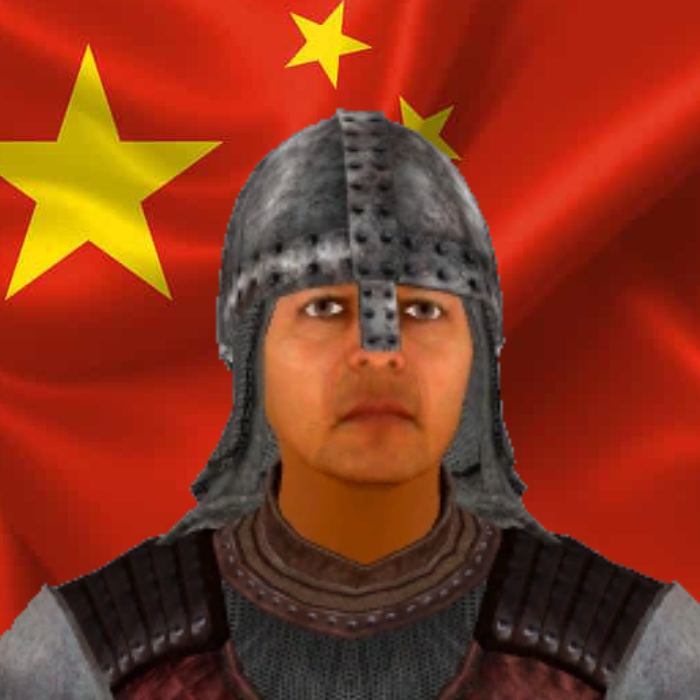- cross-posted to:
- socialism@lemmygrad.ml
- cross-posted to:
- socialism@lemmygrad.ml
One of the core issues in Marxist ecology is the separation of town and country, how we unevenly develop urban/rural systems and the increased toll that takes on natural ones as a result. We need degrowth, decommodification, and a biocentric reintegration of those three systems. Solar punk is just an aesthetic but alongside art nouveau it’s the kind of aesthetic you need to communicate a better way of life. If people just see their treats being taken away they turn reactionary. If they just see the climate crisis as an inevitable apocalypse, they turn reactionary. Solar punk is a non-reactionary example of the neo-luddite garden cities we should be moving toward. It’s much more holistically anticapitalist than other punk or traditionalist movements, and it’s pleasant when we need radical optimism and significant lifestyle changes that otherwise seem difficult.
The task of a Marxist with a movement like that is to identify the things people like about it and situate it in theory. There’s a solid 100+ years of theory on those themes which tie them into larger and more practical things to organise around. Solar punk is a vehicle to get people interested in socialist urbanism and critical ecology, not some utopian goal in itself.
Personally think we should all live in massive arcologies built for a billion people and the whole world other than these massive arcologies should be returned to the wild.
Separation from nature is the root of us not understanding our interdependence with it. When it’s something we interact with daily and rely on, stewardship becomes an ethical cornerstone that people intuitively understand. Engels said the solution was an even population distribution, and while I think that’s another form of over-development I think it hints at the best solution. High density, pedestrian-focused garden cities surrounded by common land. Heavy funding for rural communities and collectivised, nationalised resource extraction to decouple it from profit. Production for need between co-ops, home economy with the commons, state-sponsored public artisans, and nationalised industry. Healing the division of labour by blurring the lines between the office worker, farmer, scientist, and activist through how people engage with their landscape.
https://www.youtube.com/watch?v=UqJJktxCY9U This video really captures the good part of solar punk for me. They’re mastering nature but not dominating it. They need a tremendous number of diverse skills to maintain that homestead lifestyle, but that’s a liberating education rather than one that forces them into some professional niche. The technology and surplus exist for need and community enrichment. That massive urban arcology is there in the background of the equally desirable rural life, but it’s an urban forest with parks between dispersed skyscrapers. It doesn’t do a great job of highlighting what a biocentric landscape would look like, but it at least shows biodiversity as beauty and agrovoltaics as eco-utilitarian production.
That and the 400~ page books by David Harvey or John Bellamy Foster reach the same conclusion for what 21st century socialism will have to resemble. If I made the anime version of the most radical environmentalist critique I can make it’d just be a prettier version of that.
I found a YouTube link in your comment. Here are links to the same video on alternative frontends that protect your privacy:

Arcologies would be amazing.
Listen, if your hopecore fanfic art doesn’t sufficiently conform to the standards of socialist realism as to please your Soviet’s censors, it’s basically just fascist slop sorry I don’t make the rules
correct
This is very silly.
Deeply unserious, even.
Whoa, hold it, it’s just a bad take.
“Depicting results of labor while keeping the labor itself hidden is a fascist style” is just not a sturdy argument and should be corrected.
If they had said that “solarpunk is to some degree based on a longing for the wild frontier, and the foundational aspiration in settler colonies toward frontier life is fascist”, they’d at least have a good point, but a bad take is not worth excising someone over.
Oh shit I didn’t realize we were actually using that phrase for real like the libs think we do.
what percentage of solarpunk art contains the people who live in or work in or build its subjects
I looked at google images and it’s not close to 0% and I have no idea what’s specifically fascist about pictures of solar panels covered in tree leaves if you forget to add the person in overalls holding a hammer.
Ecomodernism is heavily associated with libertarian/fascist fringe politics through Zaha hadid and her firm. Solarpunk takes heavily from ecomodernism
That’s what i got, but I’m not really an architecture or art guy
Everyone I’ve ever known into solarpunk has been a socialist. Collective action for housing, food, water, and energy production to all has always been their main goal, with ending exploitation by oligarchic control over those resources as their main entry point into the genre. I’m sure there’s plenty of lib bullshit like literally every aethetic choice but this is just trolling tbh
[thing you are invested in] is actually somewhat [thing that you would hate to be associated with]
this is just a generic Twitter troll post, right down to the hedging intended to keep the argument going in the replies
Art is fascist when I assume it doesn’t depict humans
Goofy because Solarpunk (while idealist as @Chapo_is_Red@hexbear.net points out) is more interested in human involvement and labor than any other “-punk” aesthetic.
Solar-punk feels like of like an inversion of socialist realism to me. Socialist realism celebrates the worker as creator with muscles straining, tools in hand, actively building the world. Labor is heroic, collective, and visibly transformative. The aesthetic screams: WE made this. On the other hand, solar-punk envisions society after the work is done with comfortable citizens enjoying green tech built by unseen hands. The aesthetic whispers: Look what grew while no one was laboring.
So all art featuring architecture that doesn’t have it actively being built or features someone holding a hammer in the foreground is fascist?
Is this fascist?

Hard to say; it is very silly-looking though. It’s like someone threw a couple shapes together, traced random lines between them, and called it a design.
- The building in the background is a sqrt(x²+y²+z²) model, instead of weighting the Z axis by a factor of 2 or more because of the higher energy cost of going up elevators or stairs.
- Instead of being earth-bermed, the cylindrical buildings hang above (?!?) the terrain.
- The bridge that tunnels in and out of hills doesn’t seem to be meaningfully linking anything, and doesn’t really need to exist.
- Everything is made of concrete (renderite?) and glass. There’s no brick, cob, wood, or stone.
It does have green roofs and open parkland and integrates terrain. On the left side, the sidewalk traces the contour, and that’s the most solarpunk part of the image. But if it doesn’t have deep principles of sustainability, it’s more futurism/cyberpunk than solarpunk.
It is an actual train station that is currently being renovated in China. Which is kind of my point, we have the kind of stuff being derided as idealistic actually being made in China, with the kind of images promoting it that are being derided for being fascist. Is the topic at hand here that some people who promote solarpunk that are fascists and that we then work backwards from that to see the same in the art, or is it that solarpunk is inherently fascist aesthetically speaking (which I assumed the post was about)?
What is the substantial difference between this render and a solarpunk render of a forest city? (Or the renders of forest cities being built or sponsored by China)
That makes sense, I stand corrected. I still think it’s silly to not have the cylinders any higher, and to have them looking like they’re haphazardly laying on top of the terrain, instead of anchored inside it.
Also, the grass lawn monoculture is bad
I think I explained myself clearly above.
So is that a yes or a no? If we were to assume that no aesthetics exist other than solarpunk and socialist realism your argument would be sound, but as it is now you defined pretty much everything that isn’t socialist realism as fascism.
We’re not talking about art of the sake of art here. We’re talking about a political ideology and the art associated with promoting its values. The issue I have is that solar-punk sells a vision of a comfortable society while ignoring the labour that underpins it. In my view, the recognition of the central role of labour in society has to be part of any genuinely socialist aesthetic.
You are the one coming out with a topic stating that the art doesn’t show the workers building it and is therefore fascist by default. Virtually no art other than socialist realism features the builder, and even most soviet architectural art doesn’t feature any people to any significant extent. It is the same kind of tea leaf reading that you get when westerners call Stalinist or Chinese architecture totalitarian and evil by imagining the people who were enslaved to build it.
I wonder since the majority of the real world muscle behind the actual movement with forest cities and expanded solar power automation is currently in China. Like, another topic you just posted completely fits with the whole aestetic, but I assume it wasn’t meant to be seen as terrible news.
I think I was pretty clear in what I said above. Feel free to actually address that.
quoting for posterity
We’re not talking about art of the sake of art here. We’re talking about a political ideology and the art associated with promoting its values. The issue I have is that solar-punk sells a vision of a comfortable society while ignoring the labour that underpins it. In my view, the recognition of the central role of labour in society has to be part of any genuinely socialist aesthetic.
The problem is that solar-punk is entirely compatible with social fascism. It sells a vision of a comfortable society that sweeps labour that underpins its functioning under the rug. This is largely how the west functions already. We outsource labour to the global south where it’s brutally exploited, but then peddle the whole Nodric “socialism” where the exploiters live in comfort.
The recognition of the role of labour in society has to be part of any genuinely socialist aesthetic.
Wow, all the images of Shibam have no people in them. Yemen is cancelled for being fascist.
Maybe if we inserted some Western consumerism and planned obsolescence, they could be perpetually engaged in construction work like we are in the West.
All you have to do to not be fascist is build things that are not made to last, so you always have a need for more glorious labor that replaces what has already been built. Easy.
20-hour work week? 10-hour work week? But then where are all the workers going to be appearing? This economic projection of a reduction of socially necessary labor input, to maintain an objectively decent quality of life for a stable number of people, is fascist.
And FALGSC must be the most fascist thing there is. Everybody has the cool cosmonaut avatars and the banner images of people flying through space alongside rockets, but no one has a banner image of people working in the factories to make the space suits and the rockets, or mining the metals for them.

'oh but he has a hammer and sickle symbol in his fist'
If I slap some ivy on a brick wall in a hammer and sickle shape, would that make you happy? But I still wouldn’t call that solarpunk to much of a coherent extent, though. Certainly, the aesthetic does blend with others, but solarpunk distinguishes itself coherently from cyberpunk and futurism to the degree that it incorporates human-scale, appropriate technology, and living systems. Putting a couple trees on the outside of the Burj Dubai is a strawman.
The only way it’s not fascist is if *checks notes* you constantly have a massive number of labor hours being invested into something.
Bravo, you really put a lot of effort into that straw man.
All I’m getting out of this discourse is Solarpunk art needs more twinks or bears (pick yer poison) in dirty overalls installing solar panels and geodesic domes
yup that’s the way to fix it :)
What, so you’re saying:
Westerners need to fantasize less about the complete reorganization of society into something utterly unrecognizable and focus more on how to take control over the ugliness that already exists so that they can chart a better course for their countries, as China has.
That being said, it’s a huge stretch to compare it to social fascism. While it is political in nature, I feel its merits lie more as a literary and artistic counterbalance to dystopian worldbuilding in the west
Honestly, taking it as its worst, an aesthetic artistic movement is based on aesthetic, and frankly I don’t see a lot of harm in that, at all, but it’s not good if one is stuck on it, as an end-all
I think its role is similar to that of religion, albeit more benign
Religious suffering is, at one and the same time, the expression of real suffering and a protest against real suffering. Religion is the sigh of the oppressed creature, the heart of a heartless world, and the soul of soulless conditions. It is the opium of the people.
The abolition of religion as the illusory happiness of the people is the demand for their real happiness. To call on them to give up their illusions about their condition is to call on them to give up a condition that requires illusions. The criticism of religion is, therefore, in embryo, the criticism of that vale of tears of which religion is the halo.
The problem is that solar-punk is entirely compatible with social fascism. It sells a vision of a comfortable society that sweeps labour that underpins its functioning under the rug. This is largely how the west functions already. We outsource labour to the global south where it’s brutally exploited, but then peddle the whole Nodric “socialism” where the exploiters live in comfort.
The recognition of the role of labour in society has to be part of any genuinely socialist aesthetic.
Socialist realism celebrates the worker as creator with muscles straining, tools in hand, actively building the world
Do you actually have a conception of Soviet & socialist art outside of the Western propagandistic portrayal of it? Now, I’m not an art historian or anything myself, but I’m pretty sure it was not in fact a Japanese bara manga about big sweaty workers with their hulking muscles swinging hammers around. The Soviet Union was a big country, with many separate republics and ethnicities (hence the name!), and I’m sure a variety of styles and artistic movements.
The Soviets were also pretty big on resorts with spa-style facilities, so portraying workers as only ever working wouldn’t have even necessarily been the ideological line, especially after the Stakhanovites went out of fashion. And a bunch of socialist realist paintings aren’t of workers at all, they’re just Stalin or other important figures standing around looking cool

Having grown up in USSR, I’m pretty sure that I do in fact have a conception of what Soviet art looks like. Obviously socialist art encompasses more than simply glorification of labour. The point I’m making is that labour is an essential part of socialist art. The critique of solar-punk as an ideological and political project isn’t regarding what it depicts but rather what it omits.
but I’m pretty sure it was not in fact a Japanese bara manga about big sweaty workers with their hulking muscles swinging hammers around.


twitter users:
 is this fascism?
is this fascism?


Shit, the Trots were right

If that was the sum of Soviet aesthetic then you might even have a point. However, the bulk of Soviet art celebrates the worker. On the other hand, labour is entirely invisible in pretty much all the solar-punk aesthetic.
of the first eight image results on google, six of them have people in them, and of the ones that have people in them, 4/6 of them show labour idk what you’re talkign about lmao

lmao people standing around enjoying environments that somebody built is not what depiction of labour looks like 🤣
Tell me you’ve never worked manual labour without telling me you’ve never worked manual labour.
There’s always lads standing about, having a smoke, chatting shite, it’s not all swinging hammers and rolling up your sleeves. Labour is hard, people take rests all the time without it being an official break.
But regardless, to call a movement fascist because their art doesn’t depict someone swinging a hammer in every image is bonkers.
True liberation of the workers involves less work for the workers. As the Greeks put it, we should be eating figs, making art, and having orgies once our needs are met. Not working more for the sake of working. Solarpunk is utopian, utopia means rest and relaxation for the working class, not Sisyphean toil.
Ah yes, the labour is implied by people standing around.

But regardless, to call a movement fascist because their art doesn’t depict someone swinging a hammer in every image is bonkers.
What I actually said is that solar-punk is as compatible with fascism as it is with socialism. The society it depicts could be a socialist one or it could be one built on slave labor. Nobody is talking about any Sisyphean toil here. That’s just a straw man you’re building.

Your argument boils down to this then.
Beyond looking at some pretty pictures, you’ve clearly read fuck all about Solarpunk if you think it’s normal to say it could be built on slave labour. It’s generally depicted as some form of anarcho-communism, although other flavours do exist. But I guess that’s not your flavour of left, not Soviet enough for you, and must therefore be brandished as bad, evil, and fascist.
As usual, the Marxist Leninists stomp on the Anarchists at the first opportunity. Aiding the Capitalists while professing to be on the side of the workers.
Give some manual labour a go instead of putting down other left movements. Actually do some physically demanding work. It might help you appreciate why people who swing hammers all day, every day, don’t want to see hammers in their art after work.
lots of MLs and other statists in here clowning on OP.
As usual, the Marxist Leninists stomp on the Anarchists at the first opportunity.
Such a God damn victim. Do you realize how silly this rhetorical tact of smol bean anarchists bullied by the reds looks to anyone who isn’t an anarchist or a lib?
Aiding the Capitalists while professing to be on the side of the workers.
I’m begging you, tell me about Spain next. I’m almost there.
As usual, the Marxist Leninists stomp on the Anarchists at the first opportunity. Aiding the Capitalists while professing to be on the side of the workers.

🥱
Have you ever been in a building you didn’t build?
Quick question, what’s the context for my comment?
are you looking for labour or construction work here
I’m looking for a depiction of how the society is actually functions. Solar-punk aesthetic is but a small sliver of that.
so you’re not looking for depictions of labour in solar-punk?
What I’m saying is that for solar punk to be a credible socialist aesthetic it would need to EXPAND to include depcitions of labour. Let me know if this is still confusing for you.
I don’t see labor in any but the one you highlighted, where someone appears to have just picked fruit for personal consumption based on the size of the basket. If those white dots are people in the bottom left one, I’ll give you that one fully. The bottom middle one has a crowd but no discernible activity that I can tell and the others don’t seem to have people and certainly don’t have people doing anything, again that I can tell. The images are a bit small.
here are higher resolution versions from the ones that had labor on the first page of the google search




I appreciate your accommodations.
Alright, so the white dots are a shepherd, some sheep, and some farmers. That’s an example of labor that supports society. In order, 2 still looks like someone just having recently gotten food for themselves (small basket, walking well away), 3 has kind of a strange absence of a gondolier despite seeming to have a gondola and no indication of a conductor/captain for the trolley boat, and 4 has one of the ~24 subjects using a wheelbarrow, so I’ll give you that one.
In my opinion, only 1 and 4 are real examples and 2 and 3 are actually examples of what yog is talking about.
for two the official description of the art calls them farmers, the baskets are meant to be backpack sized at least for the person in the back and they are all wearing uniforms and walking towards the fruit tree on the left. and in three it is hard to see because of the compression but there is a gondolier standing on the boat on the far left side, their head is cut off by the top of the boat

The reason I mentioned walking away is that it suggests the baskets aren’t an intermediary before placing them in larger receptacles on standby among or beside the trees, but rather that this is the total amount being transported away (or individuals make multiple trips, but it’s all still going to their own households or something). I admit that I’m not an expert on agriculture, but it really seems like people just getting food for themselves, so if they are farmers, the optimistic interpretation is communal yeomanry.
Thank you for pointing out the gondolier. All the people in that area really blend in with the background because of the color palette. You are right on that one.
if we zoom in really hard there’s a person behind the sing whom we can’t see entirely doing productive work, really celebrating labour there lmfao
i apologize in advance, the maximum comment depth was reached, this comment is a reply to https://hexbear.net/comment/6331483
i brought it up as a counter example to the dispossessed on soviet sci-fi, before i ever called the dispossessed a foundational piece of solar-punk media
but i will agree that at the time, the concept of communism becoming a interstellar society was very real to those living in the USSR
in the material circumstance of ursula living in cold war era america, anarcho-syndicalism being applied to build socialism in a theoretical future interstellar capitalist system seemed much more plausible, which is also why the dispossessed had a second boost of popularity when solar-punk started up as a movement in between the dissolution of the USSR by capitalist encroachment and the rise of china as a second communist superpower
And that’s all fine, but my point is that these ideas are not expressed in the art itself. The original discussion is around the aesthetics of the movement. As I mention in the other reply, the constructive take away from this would be to flesh out the vision being presented using the source materials. Have the art associated with the movement encompass all aspects of the society being proposed. That would address the critique of the aesthetics being narrow.
i agree the ideas should be fleshed out more in general over time, but i disagree that the aesthetic is more narrow than the soviet sci-fi aesthetic, just that it is more that it is younger and more niche
soviet sci-fi as a movement was mainstream, made and consumed in AES, and worked off of the then real and plausible belief the soviet economic planning would eventually turn into interstellar communism
solar-punk as a movement while inherently against infinite growth and therefore capitalism, is much more niche due to existing in capitalism and state capitalism, much younger, and largely formed in hopeful reaction to the capitalist-realist dystopia. similar to acid communism it uses an eye-catching aesthetic to promote itself, it uses the aesthetic primarily to inspire hope in eco-socialists and combat activist burnout
i would largely say it is eco-socialism’s counterpart to soviet sci-fi, it imagines the world eco-socialism would create, working to inspire eco-socialists as soviet sci-fi inspired the soviets
Again, Soviet sci-fi aesthetic is itself a part of a broader Soviet aesthetic. It’s not an independent standalone movement that aims to differentiate itself from the rest of Soviet art.
i would largely say it is eco-socialism’s counterpart to soviet sci-fi, it imagines the world eco-socialism would create, working to inspire eco-socialists as soviet sci-fi inspired the soviets
And that’s fine framed that way. If you see solar-punk as a component of a broader movement I generally agree with you. I think fleshing out the imagery to be more grounded would be worthwhile, but the broader eco-socialist framework would provide the missing context here.
i deffo agree with both the soviet sci-fi aesthetic being a part of the broader soviet aesthetic whole, and more grounded depictions of solar-punk being worthwhile

I’m glad we managed to reach a consensus in the end. :)
Imma be real, I can’t see the point in debating about the political tendencies of aesthetics. It’s literally fiction. It doesn’t have to adhere to reality and so can be appropriated by anyone.
 Treatlerism
Treatlerism 
 Treatskyites
Treatskyites 
Solarpunk is just “what if we did futurism with lots of trees or literally just solar panels?”
Futurism is sci-fi (sometimes a little fantasy) and can therefore mesh with any political tendency except maybe the most purist of reactionaries / primitivists.
I’m not sure how you’d even know the people in the place built it. Let’s say you have a big shiny complex full of trees and people. If the people built it, do they have to wear overalls and safety helmets or can they wear casual clothes? How can you tell that a person in an image built a structure unless they’re actively building it or just finished building it?
Futurism is sci-fi (sometimes a little fantasy) and can therefore mesh with any political tendency except maybe the most purist of reactionaries / primitivists.
I mean, other than Russian futurism that was tamed by Leninism before quickly dying out as an art movement, futurism developed into the aesthetic of fascism.
The Palazzo Brasch says, “si si si si si si” to you.
100% correct on futurism as a distinct art movement. I’m using a loosey goosey reference to it, really, which includes solarpunk hyperrealism and so on.
This is fascism because it depicts evil red fash tankie utopia, I am very smart

pushing someone in and out of the frame looney tunes style and watching the fascism alarm go off once the number of mandatory hammer and sickle-wielding workers reaches the minimum threshold
The “Duck season!” / “Rabbit season!” bit, but it’s “Ecosocialism!” / “Ecofascism!”

Wall-E is ecofuturist, and both depicts capitalism as a social ill, and emphasizes the hard work that the humans put in to make Earth livable again post-apocalypse.
I don’t have a point to make, I just like Wall-E
ᶦⁿ ᵗʰᶦˢ ᵉˢˢᵃʸ ᶦ ʷᶦˡˡ
I have nothing to add, but I liked Wall-E too!
It stars a little movie nerd with a decaying body
he’s just like me fr
So idk anything about solar punk, but I did an image search for it and about half the images have people in them and none of it seems particularly fascist?
Imo, it’s an aesthetic. Ideologically, the worst I can call it is idealist.
I think to that point, if we want to figure out how you get from solarpunk to fascism, you need to consider what it implies by its analysis (or lack thereof) of the actual material reality that’s necessary to make the solarpunk vision come true and how that analysis/blind spots coincide with ecofascism.
What’s going on that made dilapidated buildings get overrun by plantlife? Is it massive depopulation? Are we idealizing that?
What’s the whole idea about self sufficient communities using technology to live in some kind of frontier? Is this class-conscious, or is it just repackaging settler mythology about frontiersmen and Lebensraum?
And maybe the problem with it “just” being an aesthetic is that it leaves the audience to fill in the blanks for those questions, and I think the default answers aren’t great.
I always saw it as cope. “Here is far in the future, after we’ve mostly destroyed the planet. Here is a small pocket where things have calmed down enough that people can settle back into something resembling a primitive state.”
Yeah I see it the same way too, but the reason I take so much issue with it (and I’ve even spoken about it here before IIRC) is that it’s exceedingly common for all sorts of reactionary and ahistorical ideologies to fester when people start fantasizing about going back to primitive societies or some other form of pre-modern life.
What’s going on that made dilapidated buildings get overrun by plantlife? Is it massive depopulation? Are we idealizing that?
those were the factories where the now retired subjects of the art built all their green energy tech and they don’t need it any more. A highly automated communist society wouldn’t have the same pressures driving population growth as modern capitalism with all it’s racist crying about demographics, maybe the birth rate goes down over time, maybe it stabilizes over several generations. I don’t think a deliberate program of reducing human population is reasonable (especially with any current government) but I also don’t think we should be attached to “8 billion and growing” either.
or maybe the farmers are weirdos and everybody else is living in cool cities with trains and bodegas. Division of labor isn’t fascism.
100% agree and I like to think that way about the art too, but I guess where I still take issue with it is that it makes people ask the wrong questions. In some ways, you provided the right answers to those questions, but I don’t know that people are generally gonna arrive at those same conclusions, more likely they’re gonna get stuck in the reactionary sort of framing. We only arrived at the right answers because we already have the ideology.
If anything, I feel like I prefer cyberpunk as an aesthetic, because the questions it makes people ask are questions that naturally lead them to better conclusions even if they aren’t equipped with ideology yet. Where solarpunk makes people wonder about how they’re gonna live like they’re running back Manifest Destiny in the future, cyberpunk makes them wonder how they’re gonna resist surveillance technology.
but I guess where I still take issue with it is that it makes people ask the wrong questions. In some ways, you provided the right answers to those questions, but I don’t know that people are generally gonna arrive at those same conclusions, more likely they’re gonna get stuck in the reactionary sort of framing. We only arrived at the right answers because we already have the ideology.
that’s a fundamental problem with communicating ideas with art and the reading tea leaves approach common to western art education.
I’m in the same boat and so I find such charged characterisations pretty jarring. I at least appreciate people imagining a futurist aesthetic that isn’t Silicon Valley minimalism, the “Society if” meme or grimy cyberpunk. I ignore any political programs that people tie into it.
Half of these pictures, if you were to politically analyze them in the context of solarpunk, are somehow quaint little farms but also wind power which if you’d cared about saving the earth is definitely not something you’d do. Optimally you’d want very dense urban enviroment mostly if not all to make sure as much nature as possible can be untouched and thriving.
Optimally you’d want very dense urban enviroment mostly if not all to make sure as much nature as possible can be untouched and thriving.
Just a heads up that the idea of nature = no humans, or rather, the divide between human spaces and “natural” spaces is also firmly rooted in white supremacy and colonial ways of looking at land and its role in production. Indigenous and global south people, even global north people in some cases have thrived in rural and wild environments while inhabiting them and participating in the biodiversity. The problem isn’t people, it’s extractivism. And if ecosystems will ever have a chance to recover it will be through regenerative and conscious practices, not by letting fields fallow and forests do their thing while humans live sequestered “outside” of nature.
I’m not disagreeing with you on the principle but what kind of population numbers did those indigenous tribes have? We’ve got 8,2 billion people on this thing now.
Picking up the criticism about solarpunk here; if your future only works after most people are dead for some reason or another it’s not exactly utopian or even good.
This is a lack of rigorous thinking, from someone I presume is capable of debunking the Black Book of Communism.
For the vast majority of middle-income, upper-middle-income, and high-income countries, the total fertility rate is below the replacement level, and even below 1.6 in the imperial core. After a century of this, we’re back to a world population of 2 billion people, a figure that no one would argue is inherently overpopulated. Even if the TFR harmonically regresses to 2.05, we would be fine. Communism could “kill” 5 billion more people and be the most peaceful world-system in modern history.
Those indigenous peoples had 100 million people just in North America, which is proportional to about 600 million people globally.
Those indigenous peoples had 100 million people just in North America, which is proportional to about 600 million people globally.
great, that only leaves about 7,9 billion others to account for then

Please read the whole comment and follow the math, it’s not that complicated.
are you positioning the solar punk five years from now or 105 years from now? we (well, some of our progeny) could return to 1920s population numbers over a long period of time by individual reproductive choices without any mass killing or government policy. there’s only a missing population if you think the art is depicting next week.
Read Communism: the Highest Stage of Ecology
https://www.iskrabooks.org/communism-the-highest-stage-of-ecology
I disagree pretty hard with dense urban areas being optimal and that leaving land outside of cities “untouched” would be a good thing.
Humans are nature and the entire planet is our home, which must be maintained regularly. This idea that we need to separate ourselves from the so-called natural world in order to protect it seems incorrect based on history. Many indigenous groups maintained thriving forests, grasslands, etc for centuries before colonizers showed up. Many other animals maintain their environments as well; beavers, elephants, etc. Humans are pollinators too!
Obviously we do many horrible things to our environment, but that’s not an innate human behavior. We learned to be destructive of our own environment over time and then it was spread everywhere through colonization. Many people went from being just another animal to seeing themselves as special and, largely through religion (not saying religion is bad, just saying it was used as a tool by the ruling class to indoctrinate people), were taught that everything and everyone existed to be exploited for resources. Capitalism is born out of this idea that we are not part of nature.
I think alienation as described by Marx and others after him explains what I’m saying here in a different context and certainly in more detail. I also don’t think we shouldn’t mostly live in cities of some type, but we absolutely need people out in the world taking care of it. Moreover, I think at least a not insignificant number of humans simply cannot thrive in dense urban environments.
but also wind power which if you’d cared about saving the earth is definitely not something you’d do
That depends. (link is to probably the most principled/scientific solarpunk in existence)
Wind power really isn’t the problem here
Okay, then about the “quaint little farms”… Labor-intensive permaculture, in addition to less quantifiable things like increasing biodiversity (and thereby nutrition, maybe?) and reducing a sense of alienation and even shortening supply chains, can produce enough food for maybe 10 people per hectare, or 1000 people per km². We can use this to estimate how large a food-autonomous city can be.
If everybody working the farms rides a bike there, a maximum of 10 km each way, there is a radius of 10 km around the city that can be worked. If the urban environment holds 80 people per ha, and each km² urban environment requires 8 km² of farmland to support it, we get…
(insert algebra sounds)
…about 145k population, in a circle of land that is 25 km across, but the city itself is 5 km across.
This is with side-by-side American standard city lots (1/6 acre, plus street frontage) that I’m doubling the buildings on to fit 2 one-story buildings within. With townhouses, you could easily double this density, and with apartment buildings that are still small enough to build with appropriate tech and to climb the stairs after a day at work, you could quadruple the density. If you put everyone in a narrow arcology tower with the same 10km radius, you could fit 314k people in the citytower.
Edit: With the sparser model (1k per sq km), you still can have all of humanity fitting into about 20% of the world’s land area, including food production but not including fuel and other resources.
I thought about this line too, but there’s also a lot of urban solar punk art or people calling certain talk buildings in Italy and China solar punk
Notice how solar-punk aesthetic envisions comfortable lives built on technology others created. It shows the result of labor without showing the labor itself.
built on technology others created
Whenever I saw it, I presumed it was stuff built and maintained by those depicted, and we were seeing the in-between as conditions reached a point where the relative downtime was enough that it was the majority of experienced time.
Sure, but it’s equally possible to interpret it in other ways as well. That’s the problem here, how things are created is left up to your imagination. Solar-punk aesthetic is equally compatible with people enjoying the fruits of their own labour or a society built on slavery.
Ah, phrased that way, I can definitely see that. Especially considering how much of it comes from the West, where much of our material comforts comes from exploitative labor. Good criticism.
Notice how solarpunk aesthetic envisions a lifestyle completely at odds with its productive forces. No, I don’t think your household windmill is going to sustain that level of civilization! You will build 20 MW Chinese wind turbines and you will enjoy your high level of electricity consumption.
Oh and btw we’re doing Neo-Andean architecture for our socialist society, please make the necessary arrangements.
https://www.thisiscolossal.com/2019/03/freddy-mamanis-neo-andean-architecture/

the famous fascist artform of, uh… landscape painting?
“EVERY PAINTING MUST FIT A QUOTA OF PEOPLE IN-FRAME” is a take that even actual state censors in communist countries didn’t have, truly we never stop innovating

more







this one’s definitely focused on people, but I just found it and thought it was pretty cute - also the father’s fit here is impeccable

posting the rest of these on Imgur since I’m tired of waiting on the rate-limit: https://imgur.com/a/zVOjY4E


You’re missing the point. There are people in-frame often, just not the people who did the building. It’s just artists and other quirky culture aficionados whose lifestyle is founded on the work of laborers who are rarely considered and certainly don’t receive the same lionization.
The tweet very specifically says “the people who live in or work in or …”, it’s not singling out just workers at all! You’re arguing a completely different point.
Also, how the fuck do we know what the people in-frame are? By what metric did we determine that they’re “culture afficionados” and not workers? They’re not actively swinging hammers in the image?
And what’s wrong with artists anyway, socialist countries obviously had plenty of those??
And, even if they were workers, they probably wouldn’t be the ones who built it anyway! Construction is its own separate sector of the economy, most workers in socialist countries aren’t in construction and thus live in homes they didn’t build themselves, like, what are we even talking about here?
I don’t know what the “live in” part is about, but you’re being obtuse otherwise. Artists are cool and fine (and are themselves workers at least sometimes), the point is that, at least by the perception of some, solarpunk is overwhelmingly a playground utopia with no attention paid to the people responsible for its creation or maintenance.
I think the interest in the people who built the buildings themselves is slightly exaggerated, but when these buildings are such an object of focus, it does make sense to give a bit of attention to their construction as well, and there’s always the option to depict more limited renovations of the kind that private citizens do often do with their own homes.
An Imgur link was detected in your comment. Here are links to the same location on alternative frontends that protect your privacy.



























